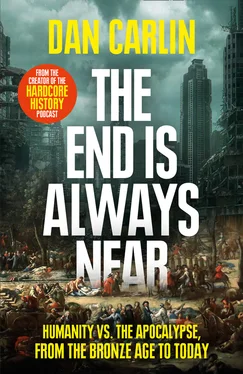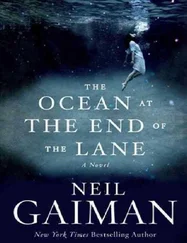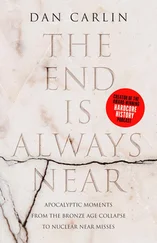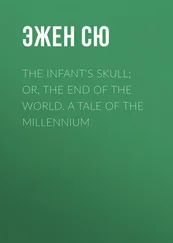One of history’s greatest military leaders, Alexander III of Macedon (known as “the Great”; 356–323 BCE), allegedly slept with a copy of Homer’s Iliad under his pillow, and he may have considered himself inspired by, and a direct descendant of, the story’s überhero, Achilles.[7] Before attacking the Persian Empire in 334 BCE, Alexander visited a site the locals said was the tomb of Achilles, and the classical writers say that he donned the “ancient” armor he found within.[8] To him, Troy was history from a long-gone great age, and he had the antique armor of a demigod to prove it.
Later scholarly opinion disagreed that the Iliad was history, however. Starting with increasingly skeptical and evidence-based academic approaches in the eighteenth century, historians trying to disentangle truth from fable considered the tale of the Trojan wars to be legendary. In the late nineteenth century, however, a German named Heinrich Schliemann, one of several people who believed in the existence of the ancient city and was actively looking for it, found the remains of one on a hill in modern-day Turkey. Over time it became clearer and clearer that the site Schliemann had found was indeed the location of the city at the center of the West’s oldest written tale. Somehow, through hundreds of years of oral storytelling, the Greeks had kept alive a distant memory of an advanced and prosperous time that existed on the far side of an intervening dark age.[9]
This discovery of “Troy” by an amateur (as most archaeologists were in that era) searching for artifacts caused an international sensation and helped jump-start the modern era of archaeological discovery. Digs, excavations, and fieldwork all over the Mediterranean and the Near East began to unearth and illuminate a world that was already ancient when the Athens of Pericles (495–429 BCE) and the Sparta of Leonidas (540–480 BCE) were young. Troy was but a tiny fraction of it. A snapshot from about 1500 BCE would show a multipower geopolitical landscape encompassing the whole region: ancient Egypt at its pharaonic height in the New Kingdom; the powerful and important Hittite Empire, controlling a large chunk of modern-day Turkey and down into Syria; Assyria and Babylon, strong societies in what is now Iraq; the Elamite people, occupying southwestern Iran; Minoa, a great maritime trading state based in Crete; and the Mycenaeans, who occupied Greece.[10]
It was an era of great cities, many of them crowned with ornate palaces, and urban life was at its highest level of sophistication so far seen. It was a golden age of wealth, power, writing, trade, military sophistication, and long-distance communication. This era, which modern history calls the Bronze Age (approximately 3000 to 1200 BCE), represents a high-water mark in the region’s development in many measurable areas. The last stage of the Bronze Age was the most golden of all.[11]
But the glory of the Bronze Age wouldn’t last. By the time of the Iron Age, the classical Greeks of Athens and Sparta were beginning to rise to levels of wealth, trade, and literacy that were comparable to the lofty heights of the previous era (in probably around 700 BCE-ish)—in fact, those earlier states and civilizations of the late Bronze Age could well have been represented to the Iron Age as Planet of the Apes represented ours. The remnants of their former greatness were nearly totally in ruins, and their history was relegated to myths and legend.
The “collapse of the Bronze Age” is a transformation on par with the fall of the Western Roman Empire, but what caused it has become one of the great mysteries of the past, a whodunnit that casts historians in the role of detectives trying to determine a cause of death for one of humankind’s great time periods.
It apparently happened relatively quickly. That’s why words like “collapse,” “destruction,” and “fall” are often used when talking about how this literal end of an era concluded. Unlike the Roman Empire, there would be no “decline and fall”—the Bronze Age would tumble from its highs like a stock market crash. An older person alive in the regions most affected during the steepest dive (from about 1200 to 1150 BCE) would likely have seen a very different world than the one she had been born into.
Histories written a century or even a half century ago have relatively definite conclusions about the fall of the Bronze Age (and a hundred other subjects). Times have changed. Modern standards and methods in many fields have subjected any and all theories to acid tests that historians of the past never dreamed of. From dating technology to DNA sampling to a thousand other tools, modern researchers have resources that can unlock—or debunk—information as never before.
It is in the nature of such scrutiny that existing theories get shot down more easily than new ones garner support. The historian John H. Arnold pointed out that history is an ongoing process—it never can, nor will, reach its final conclusion, and revisions will always be happening, as more facts and data become available and older theories are modified or disproved.
One by one, modern researchers are debunking (or at least casting reasonable doubt on) many of the theories about the end of the Bronze Age. But though today’s experts have immeasurably more information about the time, they are less sure about what befell it than ever before.
A good detective might have two questions to set the parameters for any investigation:
1 What happened?
2 How (why) did it happen?
If question number one can’t be answered, it becomes extremely difficult to answer question number two. And the truth is, experts still disagree about that first question.
Traditionally, the explanation behind “the fall of the Bronze Age” says that sometime between about 1250 and 1100 BCE, something horrifying happened to the areas in the ancient world that were anywhere close to the Mediterranean Sea. Some sort of phenomenon or event or series of events affected states and peoples from the central Mediterranean all the way east into modern-day Iraq. Hundreds of cities were destroyed or abandoned. Famine, war, disease, political upheaval, volcanoes, earthquakes, piracy, human migration, and climate changes such as drought are mentioned in the sources and found in the data. Somehow and at some point, the complex, interconnected system of trade and communication supporting the very centralized states in this era was disrupted. By about 1100 BCE, many of the formerly centralized societies had reverted (or fragmented into) more localized, smaller political entities, while wealth (such as evidenced by grave goods included in burials) declined in opulence.
Most of the states that did survive the era emerged looking like bruised and battered boxers who’d survived a grueling bout—somewhat diminished, if not permanently reduced, in power and influence. Egypt would never be the same. Writing would almost die out in Greece. And the powerful Hittite Empire, a large and strategically placed kingdom for two and a half centuries, was somehow destroyed.[12] Several major states never made it out of the Bronze Age at all.
The historian Robert Drews has said that the end of the eastern Mediterranean Bronze Age was one of history’s most frightful turning points and a calamity for those who experienced it. According to Drews, almost every significant city in the eastern Mediterranean was destroyed over a fifty-year period running from the end of the thirteenth to the beginning of the twelfth century BCE. He ran down the list of damages:
In the Aegean, the palace-centered world that we call Mycenaean Greece disappeared: although some of its glories were remembered by the bards of the Dark Age, it was otherwise forgotten until archaeologists dug it up. The loss in Anatolia was even greater. The Hittite empire had given to the Anatolian plateau a measure of order and prosperity that it had never known before and would not see again for a thousand years. In the Levant recovery was much faster, and some important Bronze Age institutions survived with little change; but others did not, and everywhere urban life was drastically set back. In Egypt the Twentieth Dynasty marked the end of the New Kingdom and almost the end of pharaonic achievement. Throughout the eastern Mediterranean the twelfth century B.C. ushered in a dark age, which in Greece and Anatolia was not to lift for more than four hundred years. Altogether the end of the Bronze Age was arguably the worst disaster in ancient history, even more calamitous than the collapse of the western Roman Empire.
Читать дальше











